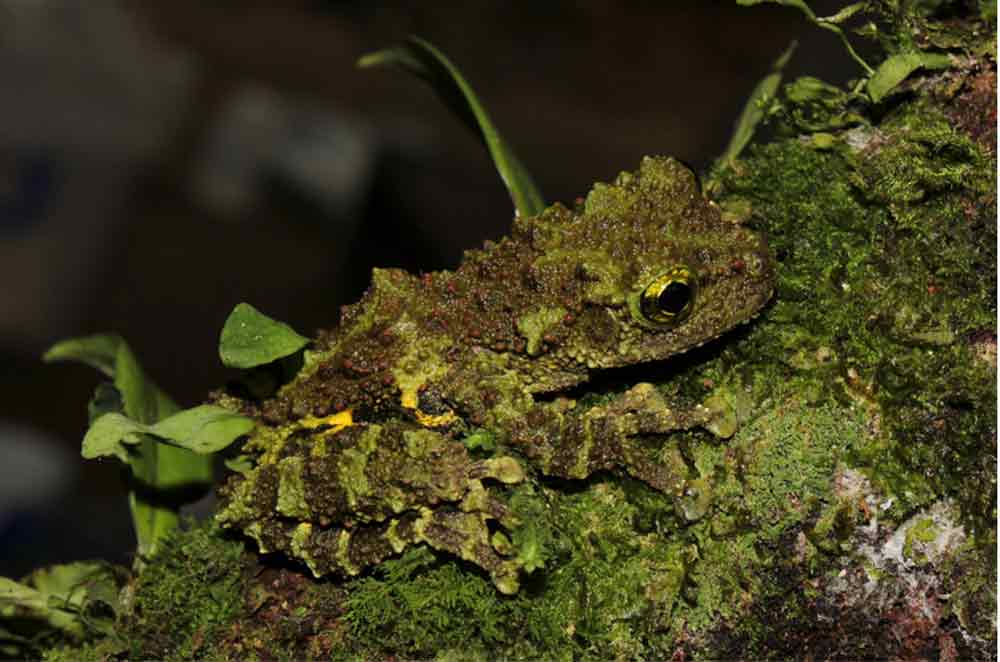Theloderma khoii sp. nov. is different from other mossy frogs in the genus in that it is larger.
Theloderma khoii sp. nov. is different from other mossy frogs in the genus in that it is larger.
Researchers in Vietnam have discovered and described a new species of mossy frog from the genus Theloderma. The frog, Theloderma khoii sp. nov. is different from other mossy frogs in the genus in that it is a larger frog, has an equal head length and width; has the presence of vomerine teeth; features a truncated and pointed snout; has large eyes with an eye diameter of about half the snout length; has spindles on the upper eyelids; webbed fingers and toes, and more.
The frog was found in June 2020 by H.Q. Nguyen and Q.K. Le in Tung Vai and Cao Ma Po Communes, Quan Ba District, Ha Giang Province in northeastern Vietnam. “The distribution of the new species is unknown but probably extends into adjacent high elevation forested areas in Ha Giang Province, Vietnam and in Yunnan Province, China with an extent of occurrence of only < 1000 km2 and continuing decline in the quality of its habitat due to deforestation. Thus, we suggest the species should be considered Endangered following IUCN’s Red List categories, the researchers wrote in their paper.
Its habitat is deep and narrow valleys of Vietnam’s limestone mountains at elevations from 1320 to 1750 meters. The valleys feature plentiful cover via primary and secondary broad-leaved karst forests.
Care and Breeding the Vietnamese Mossy Frog
Care Tips For The Vietnamese Mossy Frog
“The phylogenetic analyses revealed this taxon to be sister to T. bicolor with a strong support value, but being distinctly separated from it. Due to morphological and molecular differences between the newly collected specimens and all other congeneric species, we herein describe the newly discovered Theloderma population from Ha Giang as a new species,” the researchers wrote in their paper.
The complete paper, “A new species of mossy frog (Anura: Rhacophoridae)from Northeastern Vietnam” can be read on the European Journal of Taxonomy website.



